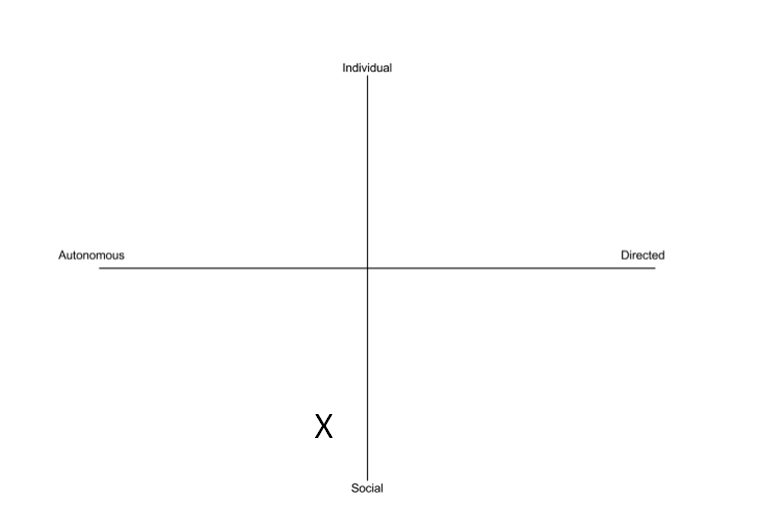How can collective work be fairly presented for individual assessment as evidence of competence. Would less technically adept group members be justified in claiming that their own competence had been enhanced by working together on this with others who were more proficient? How could they evidence such a claim?
The assessment of group work has long been under discussion given the more recent interest in collaborative and group learning. Group work especially prepares learners for the workplace where teamwork is the most usual way to undertake tasks. However, education also must meet the needs of assessment and the individual's achievement. There are several models around to assess an individual's contribution to group work, however two difficulties may arise from the fact that the product may be more than the sum of the parts and that it can be difficult to weight the relative roles. Is the research as important as the person who put together the presentation, in the case of the recent activity? What about the person who undertakes several small roles compared to someone who makes one larger contribution. How do you weight the person who encourages and drives the process against the person who makes more concrete contributions?
Belbin (cited in Belbin Associates, 2012) suggests there are nine key roles in a team, Plant (Creative, problem solvers), Monitor Evaluator (Maintains an overview, weighs up the group's options), Coordinator (maintains focus in objectives, draw out team members and delegates work), Resource investigator (looks at the opposition and makes sure the team's idea has relevance), Implementers (plans a workable strategy)' Completer finisher (Looks for errors and polishes the final product), Teamworker (helps the team to gel), Shapers (provide the drive to keep things moving), Specialist (has area of expertise). Within our own team we had slightly more defined roles, leader and coordinator, researcher, which was my key contribution, content writers (which everyone did), presentation creator, production person, reviewer (which several people including myself were involved in). My main contribution was early on, reviewing the literature, adding synopses to the wiki and suggesting questions for the presentation. I took one idea to write content for and then at the end proof read and made suggestions to improve it.
Laufenberg (2012) suggests that groups work better when individuals know that they will get a fair assessment. She grades work in two parts, one for individual work and one for the group. Students are assessed on 5 areas, individually on research, knowledge and process, and the group on design and presentation. She also has space for self assessment. In my own teaching I have also used peer assessment where each person comments on the roles played by others. This would be difficult to apply to the recent collaborative task as without further evidence it would be diffcult to assess the three individual criteria just from the forum discussions. An addition to this unit it might be useful for an individual journal of the activity to be uploaded to the blog for the tutor to assess. From the forum, however, it would be necessary for the tutor to identify the individual contributions and grade them based on the quality of that contribution, eg how would the researcher be graded, or how would the presentation be graded? It would also be instructive to allow some peer assessment and feed this in. In addition a grade could be given for the whole project and then a weighted final grade given. My argument would be that the group project should have a slightly higher weighting than the individual contribution to address the difficulties of assessing different kinds of contribution.
However, can the technically less adept group members claim their own competence has been enhanced? In the case of our own group project I would suggest this is problematic. One of our group put together a PowerPoint presentation from our combined contributions, however, anyone not knowing how to use PowerPoint would not have learned any technical skills from this, though they would have seen a good example of a presentation. Additionally another member of the group recorded this using Camtasia Studio 7 and again, any who did not know this software would have learnt anything. What group members did learn was a considerable amount about ePortfolios in Lifelong Learning and had the experience of working in a team. Therefore to claim that technical competencies have been enhanced would be hard to substantiate, in this particular exercise.
References:
Belbin Associates (2012) 'History and research' Belbin.com found at http://www.belbin.com/rte.asp?id=3 [Accessed 24/11/12]Laufenberg, D. (2012) 'Group work doesn't have to suck' blog post 1 November 2012, The Innovative Educator found at http://theinnovativeeducator.blogspot.co.uk/2012/11/group-work-doesnt-have-to-suck.html?m=1 [Accessed 24/11/12]
Laufenberg (2012) 'Groupwork doesn't have to suck' Blog post, The Innovative Educator. Available at http://theinnovativeeducator.blogspot.com/2012/11/group-work-doesnt-have-to-suck.html
